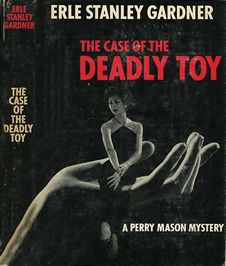In a post awhile back, we may have been too flippant, suggesting that kids stop eating their toys. After all, kids will be kids, and purveyors of toys must be ever vigilant.
What follows is an excerpt of a fresh piece from US News and World Report. We believe this sums up the issues at hand rather well:
“China Isn’t the Villain Behind Dangerous Imports | September 12, 2007 05:24 PM ET | Newman, Rick | US News & World Report | Edited For Brevity
There’s plenty of bluster from Washington these days over imported toys and other products that might be dangerous. But for the typical consumer worried about unsafe imports, nobody has been able to answer the simple yet confounding question: What can I do about it?…The answer, unfortunately, is not much.
“Made in China” isn’t the problem. It’s almost irresistible for politicians to bash a monolithic China for foisting dangerous products on unsuspecting American kids. “Made in China has now become a warning label,” Republican Sen. Sam Brownback thundered recently at a congressional hearing.
Great sound bite. Wrong villain. Had Brownback substituted “Made by Mattel” for “Made in China,” he might be closer to the truth.
That’s because the image of shoddy Chinese-owned factories hoodwinking naive American corporations is largely a myth. Most big American companies importing products from China own the factories where those products are made or partially own them through a joint venture. So the companies themselves are on-scene at the source of the problemor should beand they represent the first line of responsibility for dangerous components.
Cheap imports are here to stay. Lawmakers can fume all they want about sturdy American-made goods being driven off the shelves by cheaper imported stuff, but it’s not going to change. The world’s economies are far too interconnected to try unraveling them. And while Communist China is always a ready bogeyman, Americans buy products from lots of other low-cost countriessuch as Vietnam, Indonesia, and Malaysiawith home-grown standards no more stringent than those in China. If there’s a safety problem with toys made in Indonesia, will politicians try to score points by blaming the Indonesian government? Or take the offending company to task instead?
It’s also worth keeping in mind that over the past 30 years, there have been similar safety issues with products from Japan, Korea, and Taiwancountries that are now considered first-rate trading partners that produce high-quality goods. Unless there’s an ominous turn, the same thing will happen with China.
Imports remain a huge economic boon. Scary headlines about cheap imported goods obscure the benefits they bring. There are reasonable arguments on both sides about American jobs going overseas, but one thing that’s indisputable is the cost savings that consumers enjoy from products manufactured at the cheapest, most efficient factories in the world. As imports from China and other low-cost countries have surged, the price of clothing, electronics, building materials, and a lot of other products have fallen, sometimes plunged. “Cheap stuff provides a massive benefit to low- and middle-income families,” Hinrich says. And many American consumers remain quite comfortable buying cheap imports, whatever the risk. But don’t expect any congressional hearings about that.”
Well said; thanks, Rick!
There is of course another larger issue of toy safety that has always existed, with toy designs by US companies themselves leading to death and lawsuits (e.g., Jarts, Infant Hammocks, etc.). But, we’ll leave that for another day!











Leave a reply
You must be logged in to post a comment.